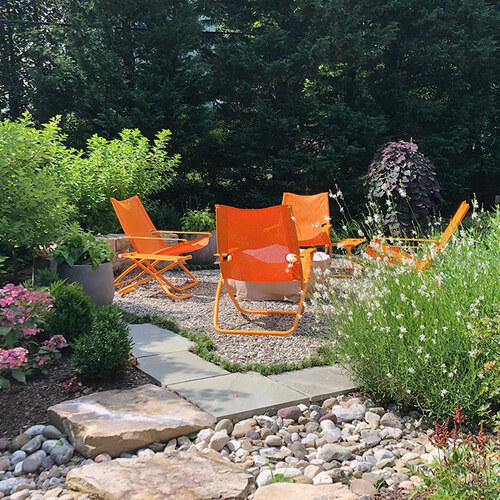
When it comes to landscape design, patios are the most requested hardscape element from my clients, and for good reason—they serve as a central hub of activity and a visual anchor for the rest of the garden. They’re also one of the best places to unleash your creativity with materials. Why do I say that?
A patio, at its most basic, is just a flat space on the ground where you’re going to do some low-impact stuff, like sitting around making s’mores. Because it’s at grade, we have fewer structural concerns than we would with other built elements, and just about any material can be safely used. Your patio could be as simple as some pea gravel that you spread around, or as involved as an intricate mosaic pattern over concrete.
Here’s an easy 3-step strategy to get you started.
Decision Making
1. Identify your main material
Typically, you’ll have one dominant material that makes up most the surface area. Popular choices include gravel, large stone (flagstone, limestone, slate), simple concrete, or smaller pavers (this term can encompass bricks, cobblestones, and modular concrete blocks).
The easiest way to narrow down these choices is to ask yourself, do I want a lot of joints, or do I want a continuous surface? Gravel or concrete will give you the most homogenous look, while stones and pavers will create a lot of lines.
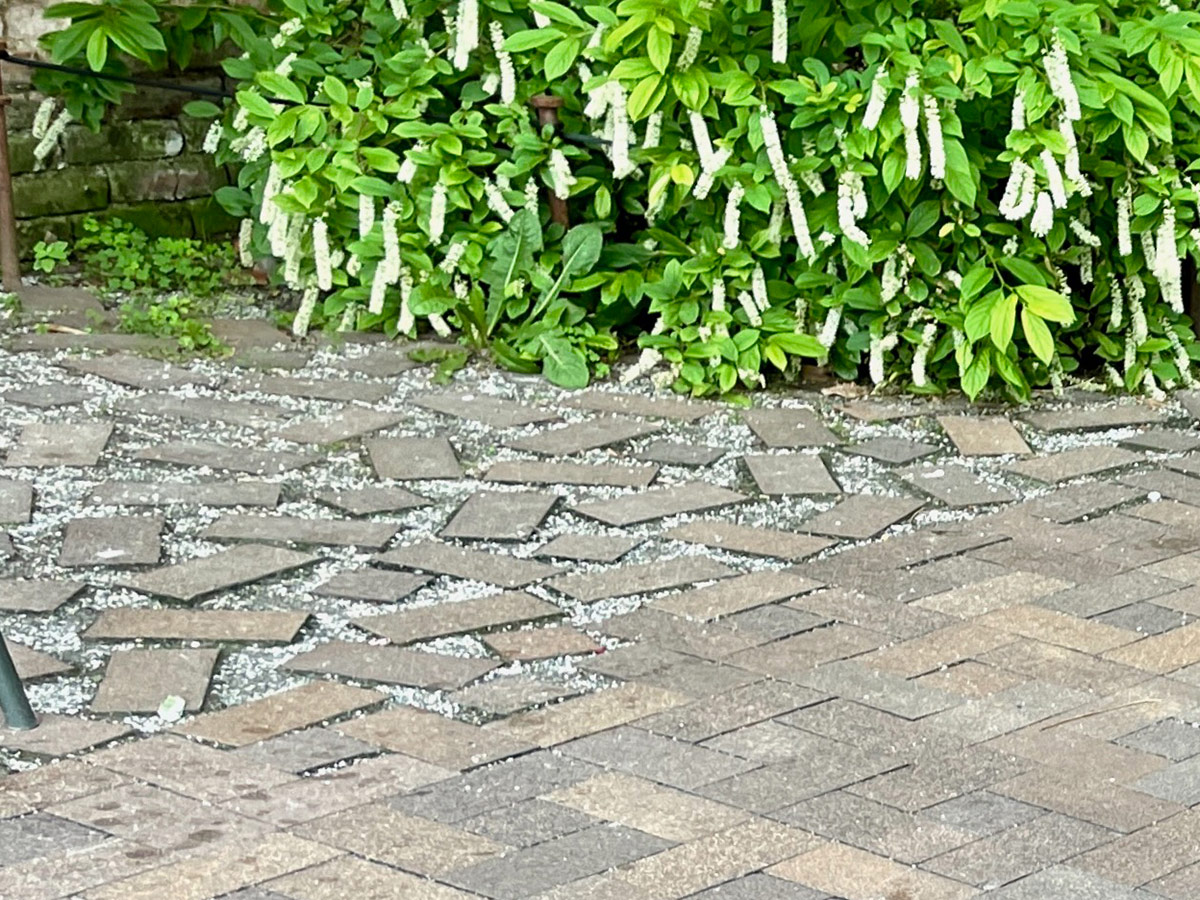
2. Riff on the joints
If you’ve chosen a material that creates joints, you’ve got endless possibilities. The way you lay the material will automatically create a pattern of lines—random, classic running bond (think of typical offset bricks), diamond, or herringbone—whatever you sketch up. But you can take it further by choosing something besides mortar or stone dust for the joints. How about pebbles or a small paver? Or one of my favorite options, plants? Note that the material you choose will determine how wide your joints need to be, so plan ahead and measure twice.
3. Consider the edges
Like a beautiful picture frame, a distinct patio edge can define and elevate the overall construction. This could be the same as your main material, used in a different shape or orientation, or a complementary material like a classic brick and stone combination. If you’re going to change materials, look at your house and other garden elements to see if there is a motif you can pick up and repeat. This will immediately tie your patio into the wider landscape.
Check out some inspirational examples below, and start sketching!
Design Inspiration
Casual pea gravel with defined edges

Main Material: Pea gravel
Joints: None
Edges: Flagstone and plants
This patio was purposely built as a relaxed firepit area, but structure was still important, so we used a border of flagstone and dwarf Mondo grass (Ophiopogon japonicus ‘Nana’, Zones 6–10) to keep the gravel in place.
Brick and stone checkerboard with green accents
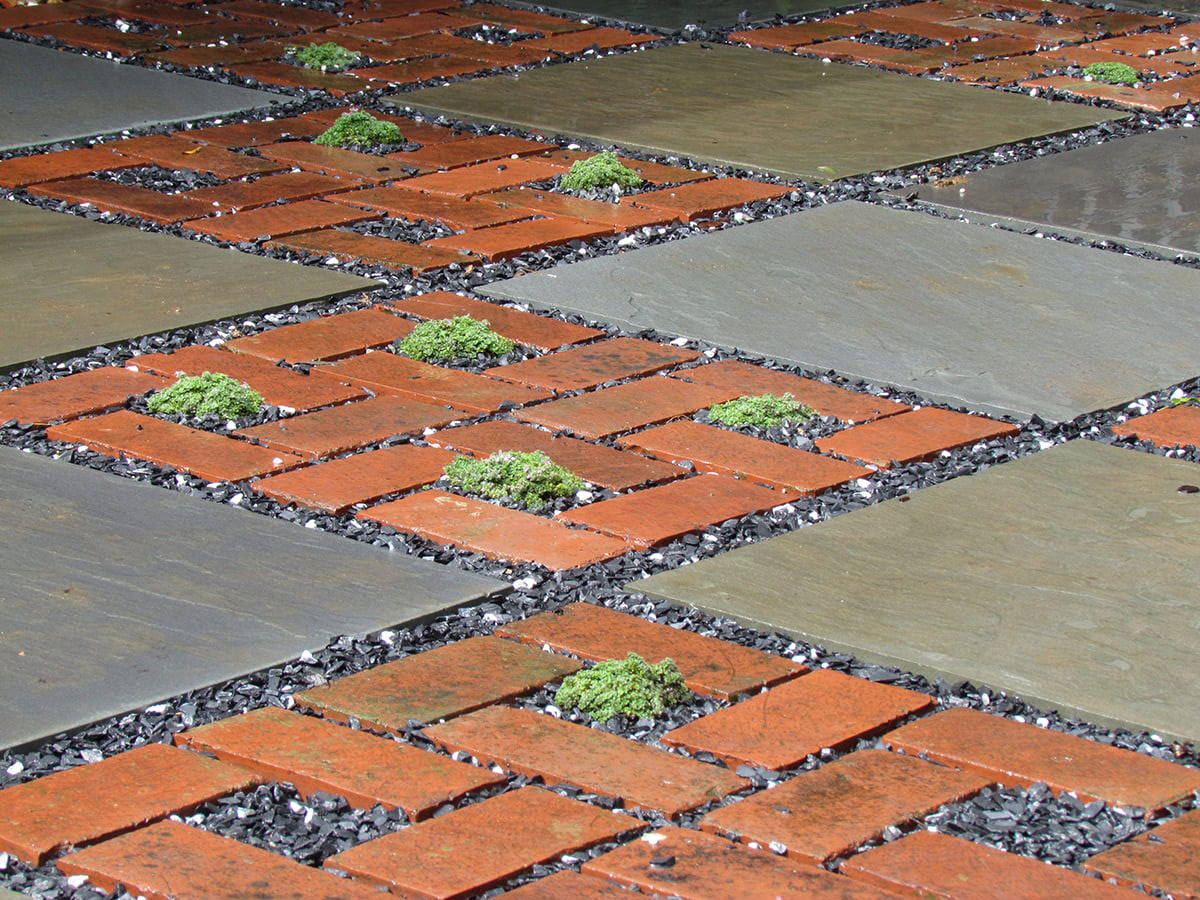
Main Material: Square flagstone with brick accents
Joints: Gravel
Edges: None
This beautiful patio plays with a classic checkerboard grid (a great place to start your design). Square stones play off bricks in pinwheel patterns, providing strong graphic interest with plenty of space for water to percolate through the wide gravel joints.
Diamond flagstone with a rectangular flagstone border

Main Material: Square flagstone in a diamond orientation
Joints: Tight set (no fill)
Edges: Rectangular flagstone
A diamond pattern and a simple rectangular stone border create a classic patio. Setting the stones tightly makes the thinnest joint line possible, eliminating the need for any fill.
Diamond flagstone with aggregate joints
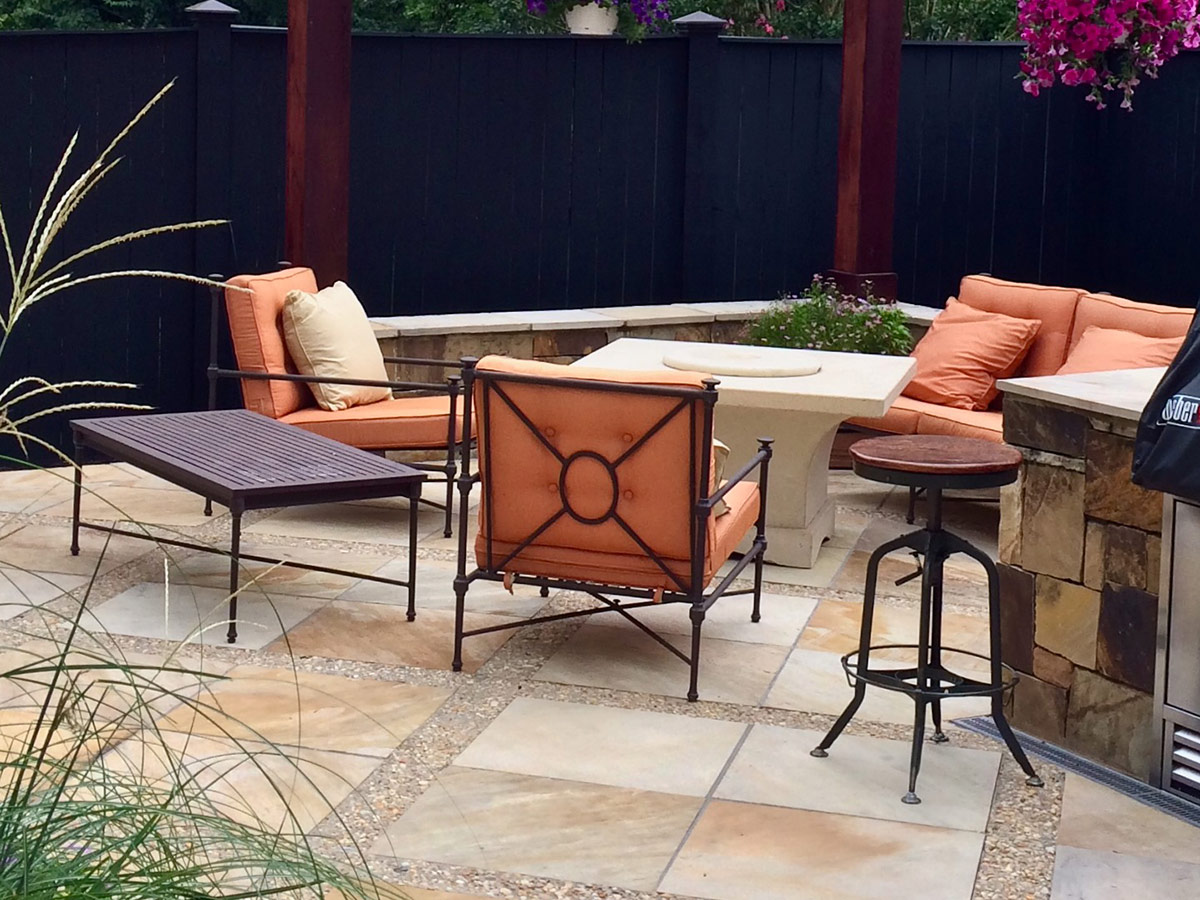
Main Material: Flagstone in a diamond orientation
Joints: Concrete aggregate
Edges: Rectangular flagstone
Large aggregate joints (concrete with small stones pressed into the surface) break up the diamond pattern of this patio into a more complex checkerboard. The pattern is strong, but the effect is softened by the light color palette.
Freeform brick and stone patio
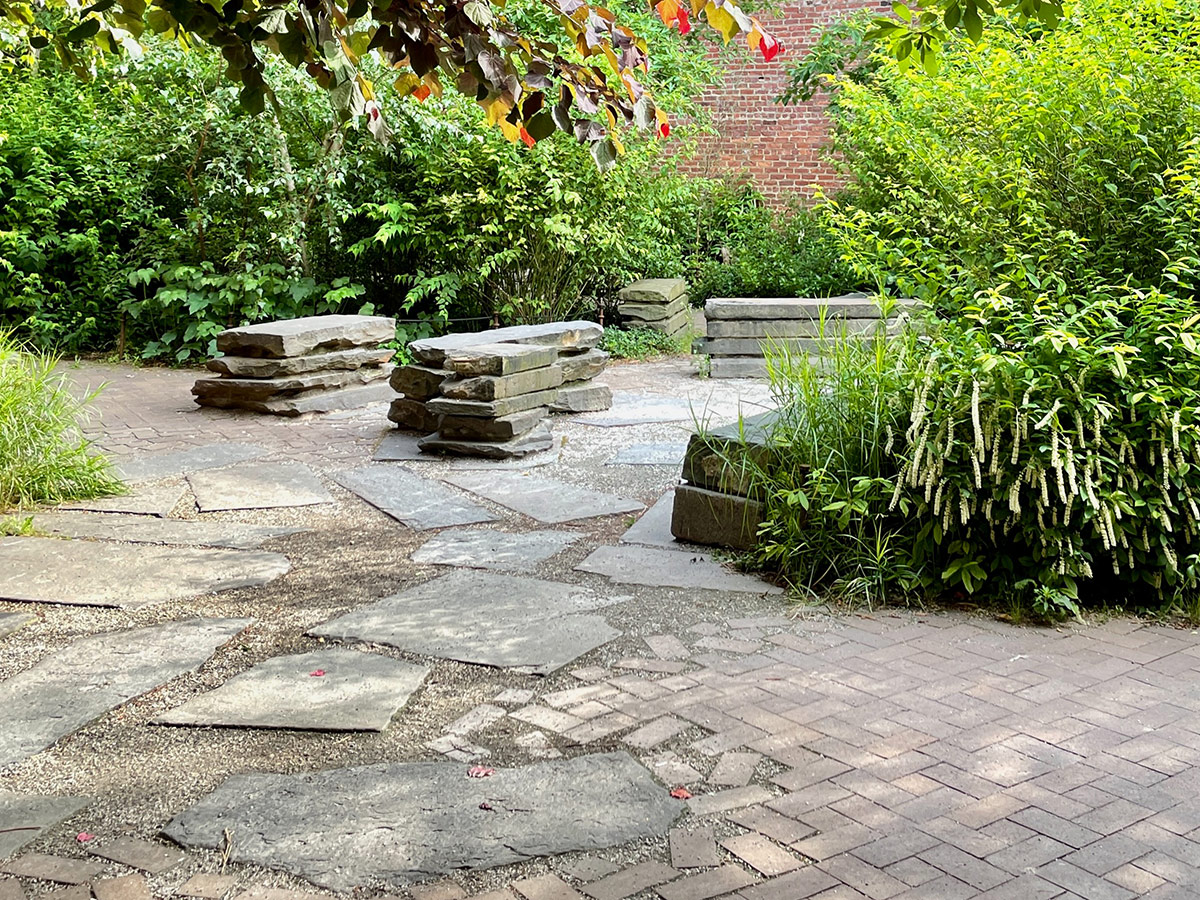
Main Material: Brick in a pinwheel pattern with stone intervals
Joints: Crushed stone
Edges: Uncomposed (confetti-like) brick pattern
I walked through this garden in Brooklyn—it is so free and inviting. A classic brick pinwheel pattern creates its own edge by decomposing in a way that feels explosive in a festive way (I get a feeling of confetti), while irregular flagstones create junctions between curves and plantings.
Find more patio ideas and inspiration:
And for more Mid-Atlantic regional reports, click here.
Maureen Robinson is president of the Washington, D.C., Maryland, and Virginia chapter of the Association of Professional Landscape Designers (APLD).
Photos, except where noted: Maureen Robinson
Fine Gardening Recommended Products
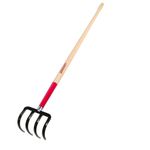
Razor-Back Potato/Refuse Hook
Fine Gardening receives a commission for items purchased through links on this site, including Amazon Associates and other affiliate advertising programs.

SHOWA Atlas 370B Nitrile Palm Coating Gloves, Black, Medium (Pack of 12 Pairs)
Fine Gardening receives a commission for items purchased through links on this site, including Amazon Associates and other affiliate advertising programs.
Lightweight and close-fitting for excellent dexterity. Machine washable. Breathable back of hand to reduce perspiration. Designed for easy movement and continuous wear. Ideal for aerospace, assembly, automotive, construction, final fix, gardening, manufacturing, operating machinery, packaging, precision handling, tiling, warehousing.

Spear & Jackson 4930FZ Razorsharp Telescopic Tree Pruner
Fine Gardening receives a commission for items purchased through links on this site, including Amazon Associates and other affiliate advertising programs.
Telescopic tree pruner with SK5 carbon steel blade which stays sharper for longer. Variable length telescopic handle extends up to 92 Inch (2340mm). Lopper for cutting branches up to 1.2″ (30mm). 13 inch (330mm) saw is ideal for cutting thicker branches. Supplied with a long cord and pull-action handle. Part of the Razorsharp Advantage collection, the obvious choice for gardeners who demand and expect precise, powerful performance. “Grow Your Own” Great British Growing 2020 Award Winners.








